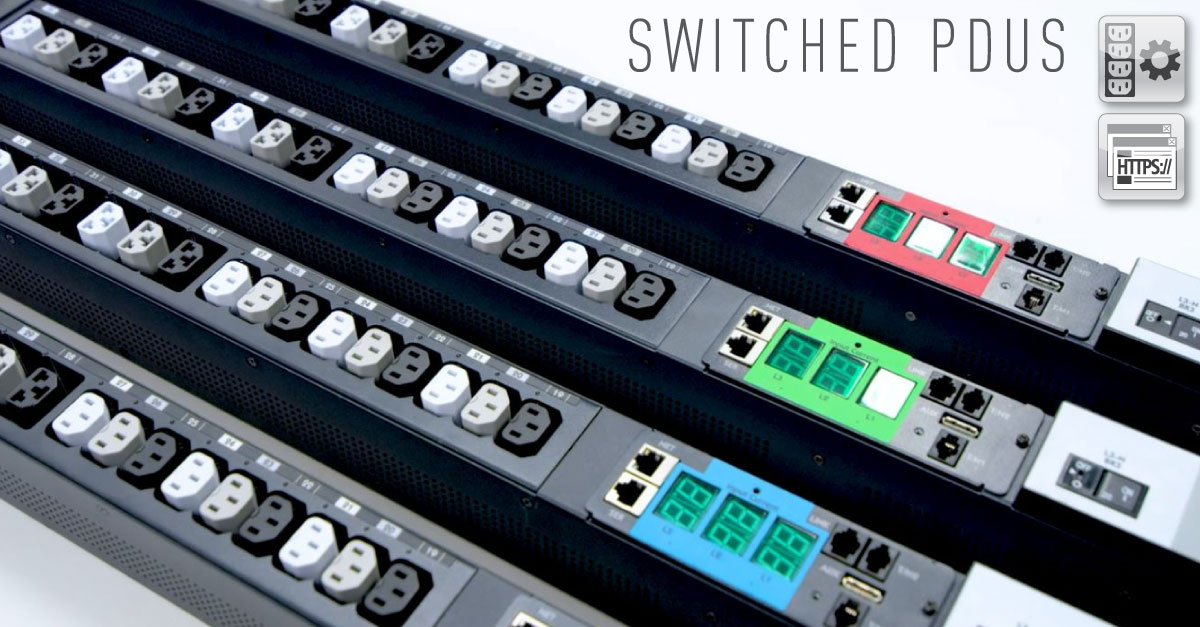What is a Switched PDU? Defined.
Annie Paquette
August 07, 2019
- Categories:
- Helpful Features
- Tags:

While hosting a series of conversations in this space about the industry, we’ve noticed confusion around the nomenclature used to describe rack PDUs. We at Server Technology are ready to admit that it is our fault. Sort of. It seems the brand names for our units have become the generic term for a broad variety of products. Like ‘Coke’ or ‘Thermos,’ some of our product names that have become descriptors for broad categories of power strips.
As an example, we’ll take what has happened to the term ‘Switched PDU.’ You might ask, what is a ‘Switched PDU,’ or ‘Switched Rack PDU?’
First, it is important to understand that this particular type of unit can generally be considered a ‘network-controlled power strip.’ In other words, it is a unit with a network connection that allows it to be controlled remotely. That connection also allows for the collection of data, so it may fall into the category of an ‘intelligent power strip,’. The Switched PDU, however, has a unique characteristic that differentiates itself within the ‘intelligent’ category. It has the ability to provide ‘command and control’ functions for the loads it powers.
Picture Patrick Warburton in a National Car Rental TV spot. The original Server Technology Switched PDU is all about control, and boy, does it ever.
Rebooting and power-up sequencing: When a core network device fails, it doesn’t always need to be taken in for service or manually inspected. Sometimes, all it takes is a reboot to correct the underlying error. Reboots aren’t always easy, particularly for multisite data centers or colocation facilities. With a switched PDU, reboots can be performed remotely from a Web interface, potentially eliminating the need to deploy service technicians.
Scheduling power loads: Many data centers waste power by continuing to run equipment during off-hours when the network is not being fully utilized. With a Switched PDU, you can remotely manage the power schedule on a per-outlet basis. That’s usually because it is a more cost-effective way to keep equipment running and saves time instead of manually rebooting. A Switched PDU allows operators to strategically schedule each outlet to avoid wasting power.
Locking out unavailable outlets: Switched PDUs help ensure reliability in the data center by making outlets unavailable. Sometimes the rack is out of available power, or the phases need to be balanced. In other instances, the data center utilizes a change management procedure that ensures sufficient power before new IT gear is added to a rack. The ability to change an outlet from a ‘power off’ to a ‘power on’ state is important for managing protocol and the critical load.
Managing multiple facilities. You don’t have one facility to manage, you have two or more. They may be spread out across the country, or even the world. As a result, performing maintenance on your infrastructure can be anything but routine. It may require you, or someone else, to travel to another facility to make physical changes. Or, it may require trusting someone else to perform changes. You can stay in control of your equipment from any location when you use a Switched PDU.
If control is your thing, a Switched PDU is just what you need. We don’t mean to imply that managing power loads, rebooting from afar or conserving energy is nothing more than preference, just the opposite. At Server Technology, we want you to know that whatever your data center requires, our Switched PDU can help you get your arms around it, even if it requires a little explanation.
Thanks for your submission. One of our Power Strategy Experts will get back to you shortly.